Orion is a wonderful wintertime constellation for many reasons.
It's instantly recognisable in the night sky, and its bright stars can be seen even in towns and cities that suffer from light pollution.
This makes it a good jumping-off point for a star-hop to other targets and constellations, like the Pleiades open star cluster, or the twins Castor and Pollux in Gemini.
It's also a good place to begin hunting down winter stars and winter constellations.
But if you can get yourself to a good dark-sky site, there are numerous deep-sky targets in Orion that can be explored through a telescope.
For an overview of this, read our guide to the best targets to see in Orion.
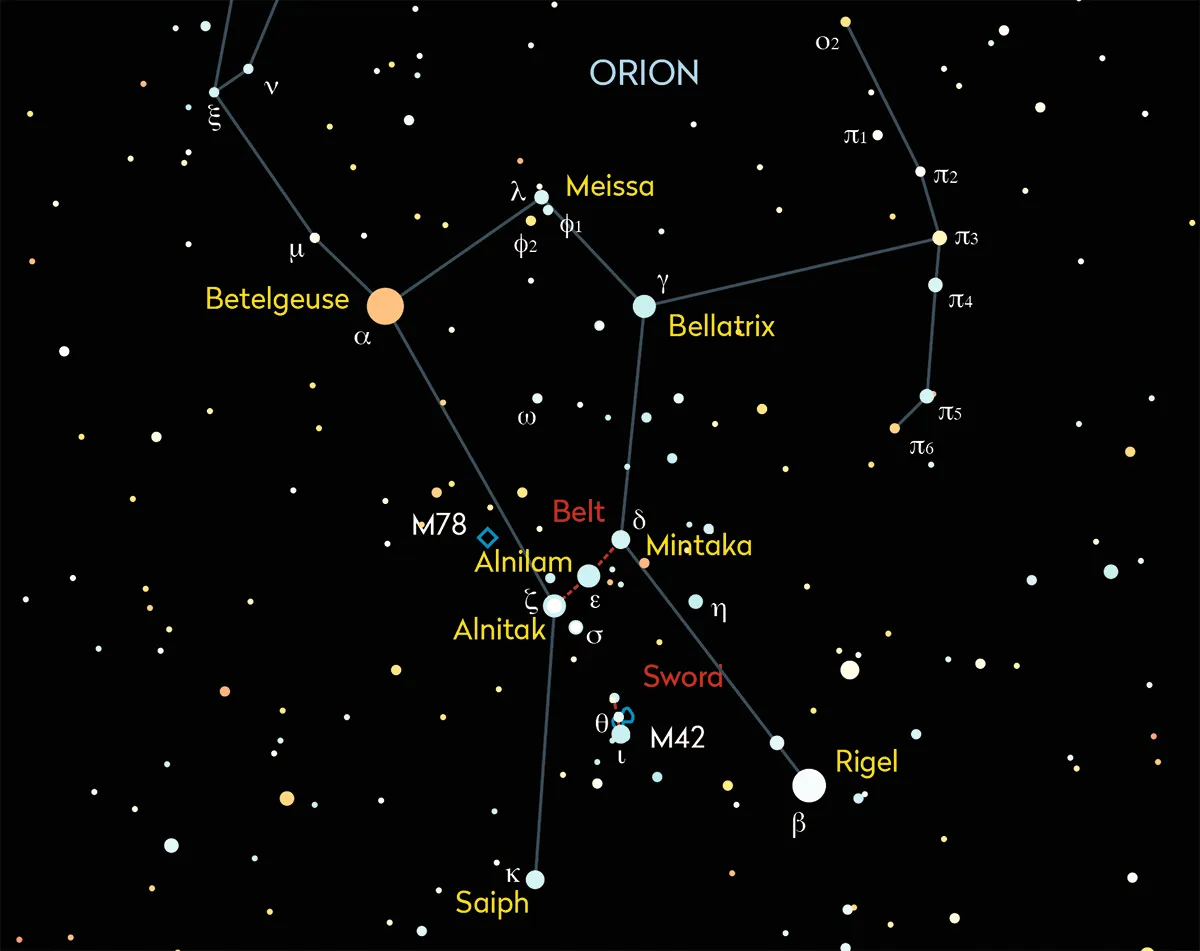
In this guide, however, we'll be concentrating on the deep-sky objects that can be seen within Orion's Belt and Sword.
These targets are best seen through a medium or large telescope. In the case of IC 434, though, really a large telescope is best.
For help locating the targets, download our Deep-sky tour of Orion's Belt and Sword chart (PDF)
6 deep-sky targets to see in Orion's Belt and Sword
1
The Orion Nebula
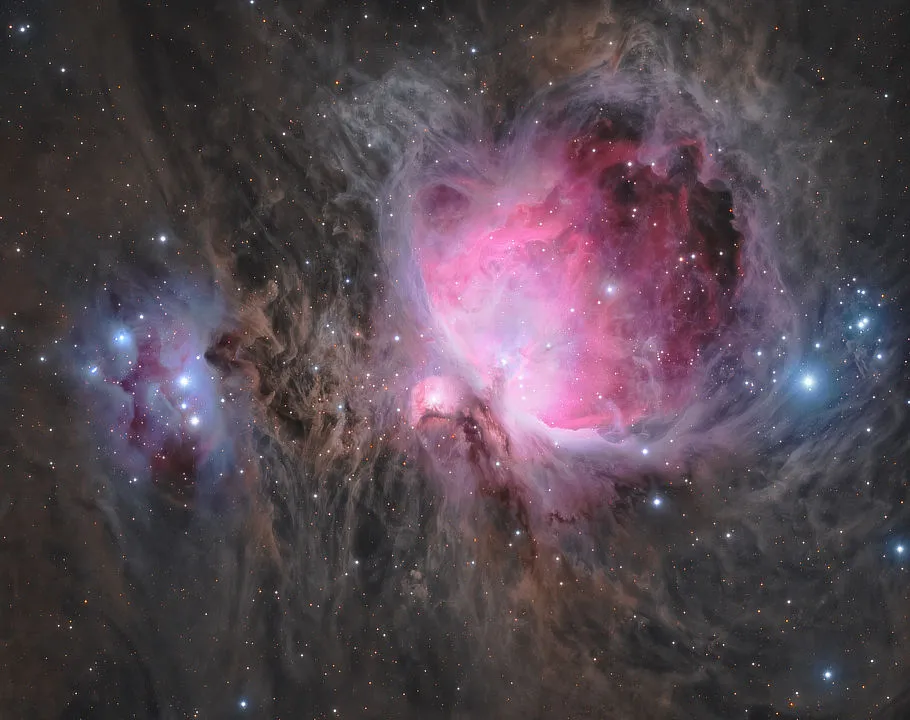
We’ll start in Orion’s Sword where M42, the Orion Nebula, takes pride of place. Magnificent through any instrument, smaller scopes give a lovely overview of this fourth-magnitude nebula, easily revealing the bright kidney-shaped ‘core’ within which the tightly packed stars of the Trapezium Cluster are embedded.
The swept-back ‘arms’, the Sail and (confusingly) the Sword, are obvious, giving M42 its distinctive shape. Larger scopes let you explore tendrils of excited hydrogen. Under very dark skies it may be possible to see the swept-back arms reconnect to form a loop.
The nebula is around 24 lightyears across and 1,340 lightyears from the Sun. It’s also the closest star-forming region visible from Earth.
Read our guide on how to photograph the Orion Nebula.
2
M43
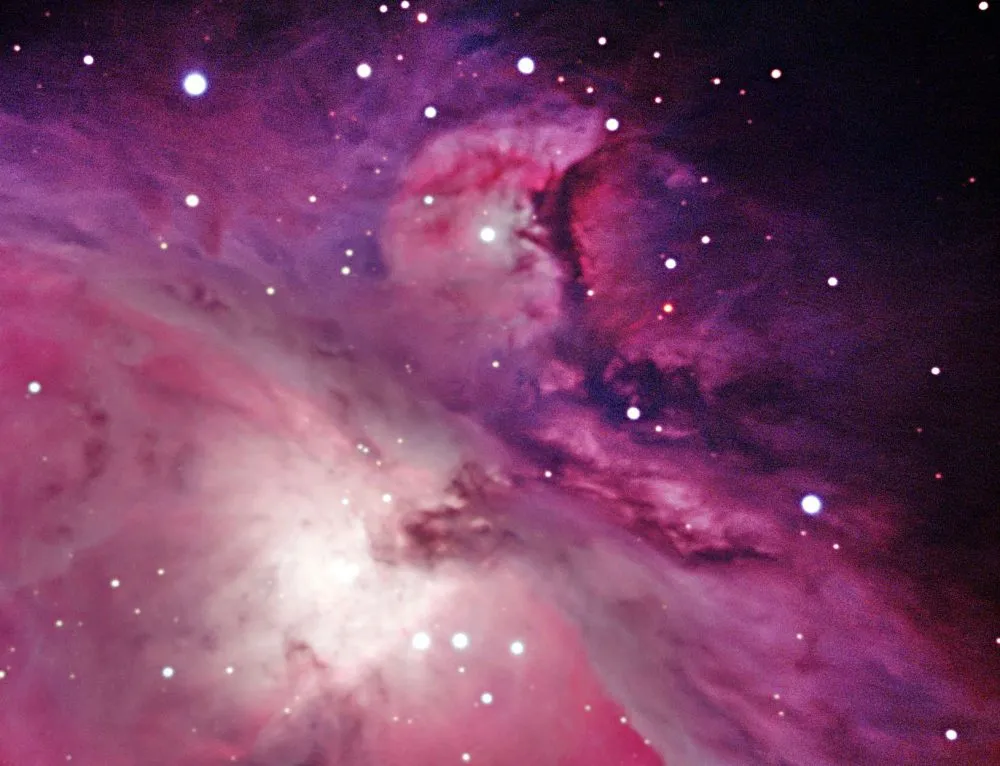
Eight arcminutes north and slightly east of the Trapezium sits the comma-shaped emission nebula known as M43 or De Mairan’s Nebula. Smaller instruments show a smooth nebulous region with seventh-magnitude variable NU Orionis slightly offset from the centre.
NU (not to be confused with Nu (ν) Orionis) powers the nebula, causing it to glow. The distinctive comma shape doesn’t become apparent until you go above 250mm of aperture. M43 appears separated from M42 by a dark dust lane, itself extending towards the Trapezium to form a dark feature known as the ‘Fish’s Mouth’. M43 is 1,300 lightyears distant and around 2.1 lightyears across. ο SEEN IT
3
NGC 1977
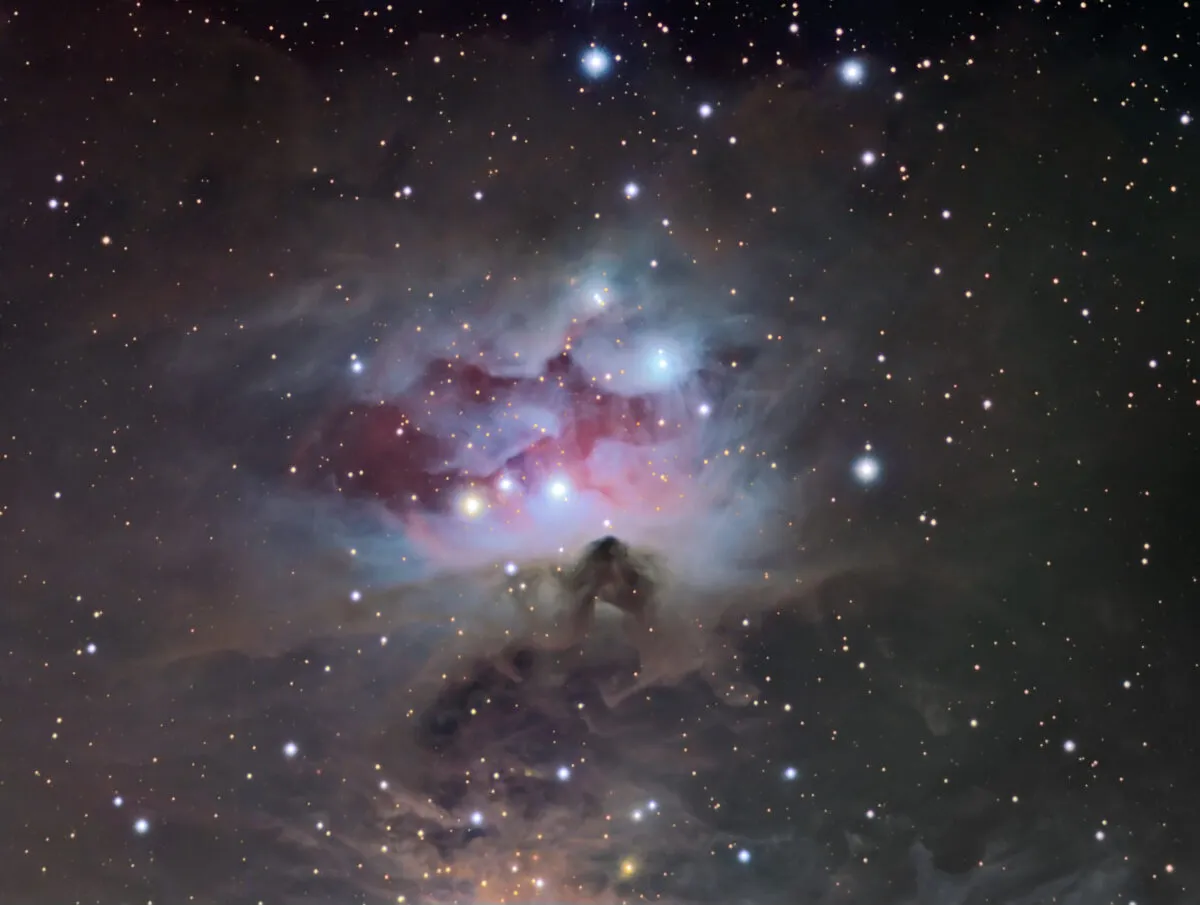
Head 26 arcminutes north from NU Orionis in M43 to arrive at a distinctive group of three stars: mag. +4.6 42, mag. +7.3 V359 and mag. +5.2 45 Orionis. The trio are surrounded by the east–west band of reflection nebulosity, NGC 1977. The brightest part of this 40 x 25-arcminute nebula sits south of the three stars. A darker area south of the western part of the nebula creates a distinctive scalloped-out southern boundary.
The whole region is part of Sh2-279, named the Running Man Nebula because of the silhouetted figure formed from darker lanes crossing NGC 1977 and in between the brighter nebula and two smaller nebulae to the north: NGC 1973 and NGC 1975. The Running Man is best ‘seen’ through long-exposure photography.
4
IC 434
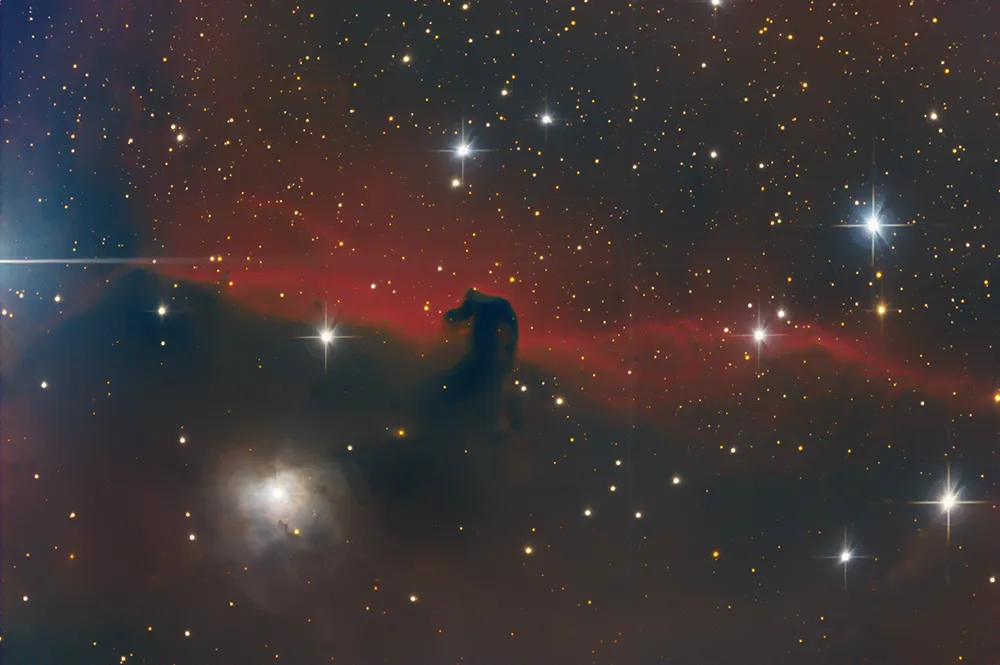
Next is emission nebula IC 434. Head north to mag. +1.7 Alnitak (Zeta (ζ) Orionis), the eastern Belt star.Look 50 arcminutes southwest to mag. +3.8 Sigma (σ) Orionis. Head 31 arcminutes east-southeast of Sigma to mag. +6.2 HIP 26713, then mag. +6.4 HIP 26820 16 arcminutes further east still. IC 434 appears as a linear curtain of nebulosity, its brighter and straighter edge running from Alnitak to a point between HIP 26713 and 26820.
It is hard to see so dark skies, an aperture over 250mm, and a hydrogen-beta filter are recommended. Identify mag. +7.5 HIP 26756 using our chart and try to see the small dark notch interrupting IC 434’s curtain. If you see this, well done – you’ve found the Horsehead Nebula!
5
NGC 2023

The Horsehead can be tough even with a large telescope. Thankfully, our next target is easier. Look 10 arcminutes east-northeast of HIP 26756 (see target 4) to locate mag. +7.8 HIP 26716. You’re now looking at the heart of NGC 2023.
The nebulosity may not be obvious at first as it looks like a smooth, misty glow around HIP 26716. A small scope shows this well. Looking carefully it should be possible to see that it extends further east than west. A large telescope shows details, with darker patches breaking the nebula’s smoothness.
6
NGC 2024

Our final target is simple to locate and relatively bright at mag. +10.0, but if this sounds like an easy end to the tour, think again. NGC 2024 sits 15 arcminutes east-northeast of Alnitak, whose light makes the nebula hard to see.
A 150mm scope reveals a large 11-arcminute patch crossed by a 3-arcminute-wide dark lane running southeast to north, curving northeast at the last minute. Larger instruments should hint at more dark tendrils emanating from the central lane like a candle flame. This is NGC 2024, the Flame Nebula.
This guide originally appeared in the February 2023 issue of BBC Sky at Night Magazine.
